Child Growth and Development: Birth to 9 Months
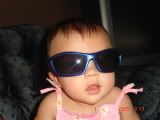
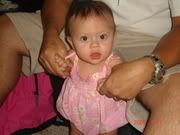

My grand daughter Karllisse has grown fast over the months. Look at her here the day she was born and on top where she turned six months. Come 17th December, she'll be turning exactly 9 months old. That is why her sitting up, reaching, and smiling are really sure pleasers.
We adults need to learn more about child growth and development so as to understand children the more. Psychologists and doctors have revealed thru their studies that a child’s progress can be accurately measured against milestones or significant points of development. Here are some milestones I want to share, not only to teachers, but to everyone who like children.
THREE MONTHS
* The baby will surely stretch her hand to grasp the toy you place just out of her reach. So make it a habit to give a toy for her to reach out.
* The baby will look at your face intently once you sing lullabies or recite nursery rhymes.
* Gently move a small toy around your baby in a slow circular movement. You will notice then that she will follow the movement with her eyes.
* Always greet your baby with a big smile. When you smile, she will smile too as it is a response that she recognises you.
* When you put a small rattle in her hand and gently shake it back and forth a few times, the baby will continue to close her fingers around it for at least several seconds.
SIX MONTHS
* She will try to sit up independently without support. For your child to be safe, prop her up with cushions.
* During your breaks of conversation, she will babble as if she’s involved with the conversation too.
* She can now hold a small toy in each hand though you still need to place them into her grasp.
* If you dropped a toy accidentally, she will look for it, especially if you ask, “Where’s your toy?”
* If placed face down, she’ll show signs of crawling most especially if she see a colourful toy just beyond her reach.
NINE MONTHS
*Once you bring a ticking watch up to her ear, she’ll turn her head round to look for it.
*The baby will smile at her own reflection on the mirror and might even reach out to touch it.
*Give her a plastic cup and saucer or two small wooden blocks as she will try to play with these two objects together.
*If you place a sweet under a cup as she watches you, surely, she will lift the cup up straight away.
THREE MONTHS
* The baby will surely stretch her hand to grasp the toy you place just out of her reach. So make it a habit to give a toy for her to reach out.
* The baby will look at your face intently once you sing lullabies or recite nursery rhymes.
* Gently move a small toy around your baby in a slow circular movement. You will notice then that she will follow the movement with her eyes.
* Always greet your baby with a big smile. When you smile, she will smile too as it is a response that she recognises you.
* When you put a small rattle in her hand and gently shake it back and forth a few times, the baby will continue to close her fingers around it for at least several seconds.
SIX MONTHS
* She will try to sit up independently without support. For your child to be safe, prop her up with cushions.
* During your breaks of conversation, she will babble as if she’s involved with the conversation too.
* She can now hold a small toy in each hand though you still need to place them into her grasp.
* If you dropped a toy accidentally, she will look for it, especially if you ask, “Where’s your toy?”
* If placed face down, she’ll show signs of crawling most especially if she see a colourful toy just beyond her reach.
NINE MONTHS
*Once you bring a ticking watch up to her ear, she’ll turn her head round to look for it.
*The baby will smile at her own reflection on the mirror and might even reach out to touch it.
*Give her a plastic cup and saucer or two small wooden blocks as she will try to play with these two objects together.
*If you place a sweet under a cup as she watches you, surely, she will lift the cup up straight away.












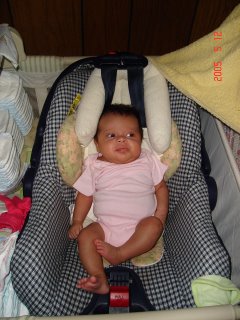
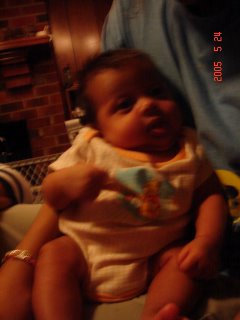

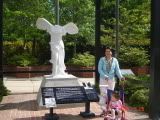

0 Comments:
Post a Comment
<< Home